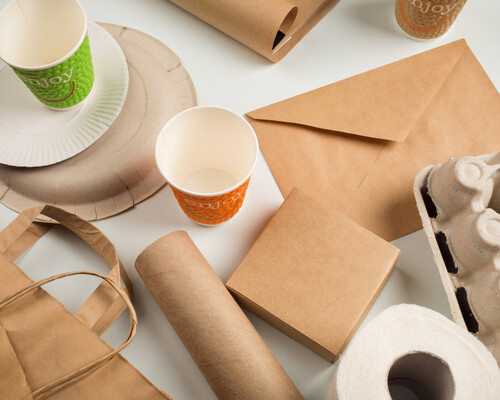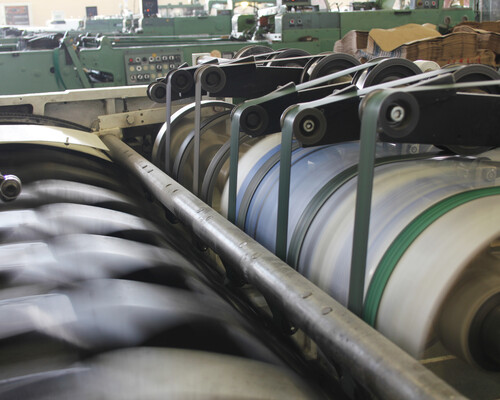What is Paper Pulp?
Pulp is broken down plant fiber. It is the primary raw material used as the first step in the papermaking process. In addition to pulp being the basis for products like copy paper and cardboard boxes, this fascinating material is also found in:
- Diapers
- Menstrual products
- Computer screens
- Paint
- Clothes
To create pulp, AF&PA member companies use 2 main inputs:
- Wood from sustainably managed forests where trees are replanted
- Recycled paper
How is Paper Pulp Made?

Image credit: Domtar
The pulping process starts with what kind of input material is being used.
When using wood, the main goal of pulp production is to separate the cellulose fibers from the lignin. Cellulose fiber is the structural backbone of paper products. Lignin is a natural glue-like substance that holds the cellulose together.
Softwoods, like pine, and hardwoods like oak or ash are both used to make pulp. Softwood pulp has longer fibers and is used for products that need strength, like cardboard— what the industry refers to as containerboard, — or paper grocery bags.
Hardwood pulp has shorter, fatter fibers that add bulk to products. They also make something softer. This makes it good for things like toilet paper and paper towels.
When using recycled paper, papers that are recovered for reuse are mixed in a giant blender called a repulper. This helps separate the fibers so they can be washed, screened and turned into something new.
What Are the Main Types of Paper Pulp?
Pulp can be divided into 2 main groups based on how it was produced: Mechanical and chemical.
Mechanical Pulp
Sometimes called groundwood, this pulp is broken down manually. It goes through a physical grinding process of wood.
This process keeps the lignin in the pulp. Keeping lignin in the pulp means more pulp is produced. However, it also means there are more impurities in the final product.
This pulp is used for products like newspapers or magazines.
Chemical Pulp
This pulp is broken down using a variety of chemicals, referred to as “liquor.” More than 90% of these chemicals are reused.
Using chemicals allows the cellulose fibers to separate without losing their strength or length. A mixture of long and short fibers is used for products like high-quality printer paper and writing paper.
Leftover waste chemicals, called black liquor, can be burned as fuel to power the mill.
What is Specialty Pulp?
There are many types of specialty pulps.
Fluff Pulp: Fluff pulp is a highly purified pulp. This means the lignin is removed entirely, leaving only the cellulose fibers. This pulp is very absorbent and can be found in items like diapers and menstrual products.
Nanocellulose: This pulp can end up in your computer screen! Nanocellulose — which is just cellulose but smaller — dries thin, clear and flexible and can be used when making certain technology.
Cellulose fibers from pulp called Dissolving Pulp can even be converted into threads and end up in the fabric of your clothes or sheets.
Is the Paper Industry Producing Pulp Sustainably?
Our industry takes the environmental impact of pulp and paper production seriously. Sustainable practices are the foundation of our industry, including:
- Sustainable forest best management practices
- Responsible wood sourcing
- Paper recycling
- Emissions reductions
- Water management
AF&PA member companies set 5 sustainability goals for 2030 to help advance sustainable products for a sustainable future.



